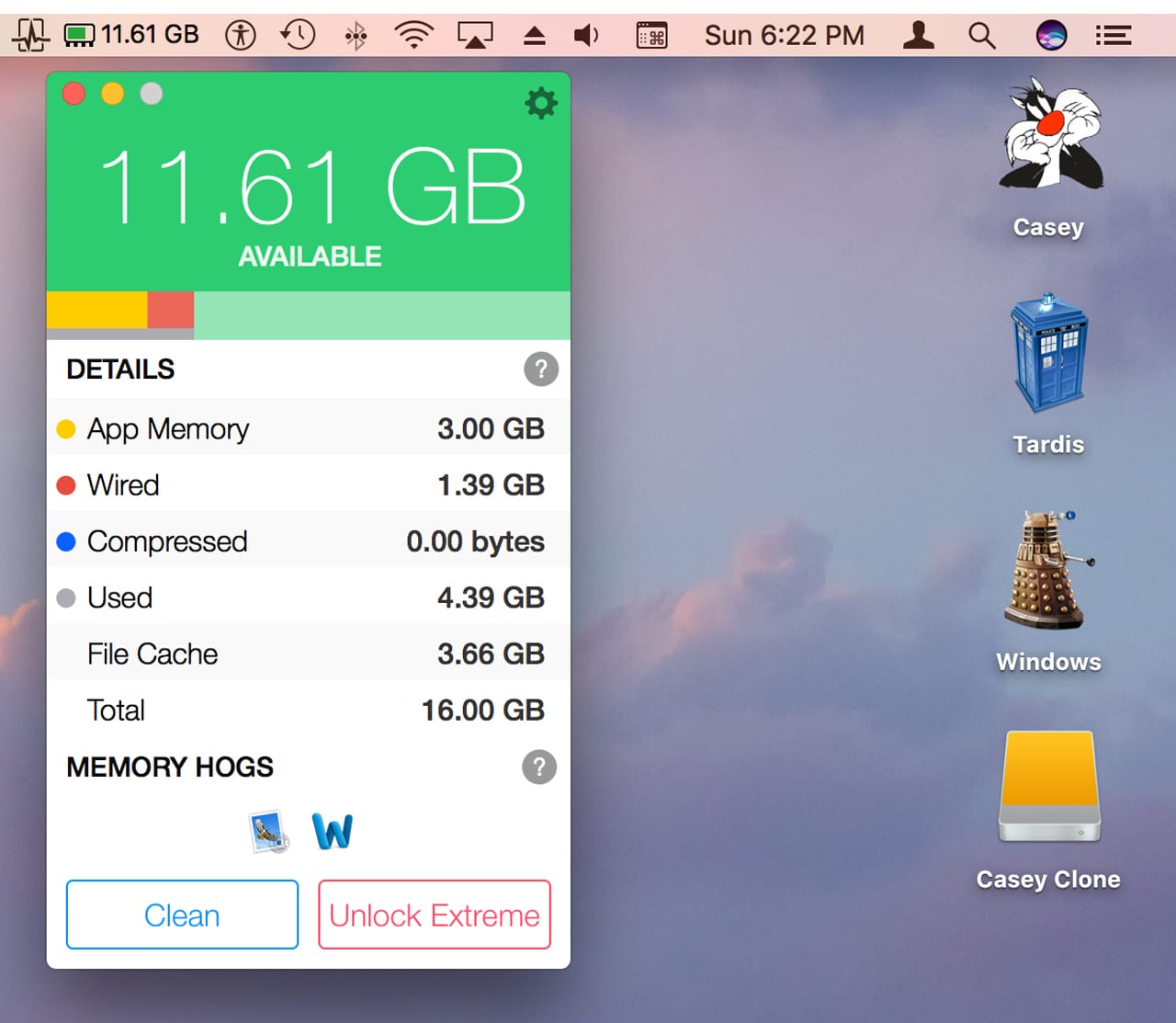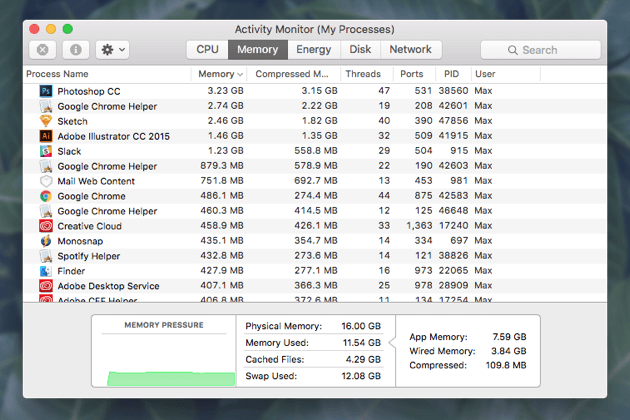Well, these are all indicating that RAM, your memory, is being utilized to the max. Thus, you need to clear your memory on the Mac. In this post, you will get to learn how you can find, clear, and reset RAM on your Mac. Plus, we have shared several helpful tips to clear RAM Mac and what you can do to resolve RAM problems on Mac with ease. How to free up some RAM on your Mac. If the Memory Pressure chart in Activity Monitor is showing up in yellow or red, then you need to free up some more RAM for your Mac to use. There are several different ways to do this, which we’ll outline below. Restart your Mac. The simplest way to clear some RAM on your Mac is to restart it.
Free Up Memory on Mac. In case you do not have enough memory for better performance, here are some methods how to free up ram mac. Launch the Terminal application, which is the default app on every Mac. Enter the following command: sudo purge. The next step is to enter a password, after that your inactive memory will be cleared. In the Activity Monitor app on your Mac, click Memory (or use the Touch Bar) to see the following in the bottom of the window. Memory Pressure: Graphically represents how efficiently your memory is serving your processing needs. Memory pressure is determined by the amount of free memory, swap rate, wired memory, and file cached memory. Download RAM Manager Memory boost for PC to install on Windows 10, 8, 7 32bit/64bit, even Mac. The weight of the apps is 3.5 MB. On the latest update of the RAM Manager Memory boost app on lmt-post-modified-info, there are lots of changes that are properly enjoyable on the Computer, Desktop & Laptop.
Activity Monitor User Guide
You can see the amount of system memory being used on your Mac.
In the Activity Monitor app on your Mac, click Memory (or use the Touch Bar) to see the following in the bottom of the window:
Memory Pressure: Graphically represents how efficiently your memory is serving your processing needs.
Memory pressure is determined by the amount of free memory, swap rate, wired memory, and file cached memory.
Physical Memory: The amount of RAM installed.
Memory Used: The amount of RAM being used. To the right, you can see where the memory is allocated.
App Memory: The amount of memory being used by apps.
Wired Memory: Memory required by the system to operate. This memory can’t be cached and must stay in RAM, so it’s not available to other apps.
Compressed: The amount of memory that has been compressed to make more RAM available.
When your computer approaches its maximum memory capacity, inactive apps in memory are compressed, making more memory available to active apps. Select the Compressed Memory column, then look in the VM Compressed column for each app to see the amount of memory being compressed for that app.
Cached Files: The size of files cached by the system into unused memory to improve performance.
Until this memory is overwritten, it remains cached, so it can help improve performance when you reopen the app.
Swap Used: The amount of space being used on your startup disk to swap unused files to and from RAM.
To display more columns, choose View > Columns, then choose the columns you want to show.
You can use Activity Monitor to determine if your Mac could use more RAM.
macOS does a pretty good job of managing system memory and, as long as you have a reasonable amount of space free on your boot drive, it can also swap data between RAM and disk when it needs to. However, even the most recent Macs only ship with 8GB of RAM as standard, which can be tight for apps hungry for memory.
In addition, some apps misbehave and “leak” memory, meaning they hog more than their fair share leaving less for other apps. The solution is to use a memory cleaning app to free up RAM. Here, we selected the top 10 best Mac memory cleaners that will help you control memory usage.
If you want to know just how much RAM each app you’re running is consuming, go to Applications > Utilities and launch Activity Monitor. That will display all running processes, including browser tabs, and show you how much RAM they are using.
CleanMyMac X
CleanMyMac X has two methods for cleaning memory. The first is its Maintenance module that has a Free Up RAM tool that can grab gigabytes of memory back with a couple of clicks. The other tool is the CleanMyMac X menu bar item. When it’s running, it will pop up a warning whenever your Mac runs low on RAM and offers to free some up for you.CleanMyMac X also has a System Junk tool that clears out junk files from your boot drive, giving you more space for virtual RAM. The app is notarized by Apple, which means it’s safe to use on a Mac. Download the free version to try out all features.
2. Memory Clean

Memory Clean is a menu bar item that shows how much memory you have available and what is occupying the rest. It also displays the apps that are eating out your Mac’s resources and inactive apps occupying RAM. There are two options for cleaning, Clean and Extreme Clean, and you can also set Memory Clean to free up RAM automatically, so you never have to think about it.

3. Nektony Memory Cleaner
Memory Cleaner is also a menu bar app with a clear, easy-to-read dashboard-style layout. When you click on it, Memory Cleaner displays how much RAM you have in use as a percentage of the total, as well as the apps that are using the most memory. You can then free up RAM with one click.
Memory Cleaner also shows you how much space is being used by junk files on your Mac and allows you to free some of that space up, too.
4. Memory Diag
Memory Diag is a RAM cleaning tool that not only looks good but does a great job of letting you know when memory is running low. Like others on this list, it’s a menu bar item. In this case, it displays what it calls a memory pressure graph that’s color-coded so you can easily see how much memory your Mac has free. If it’s in the green, no problem. If the meter is deep in the red, though, it’s time to press the recycle button to free up memory. Memory Diag also shows you which apps are taking up most RAM.
5. Memory Magic
Memory Magic is so-called because it works away in the background performing tasks to optimize memory and free up space for applications that need it. If you click on its menu bar item, you’ll see how much RAM you have still available and can, if required, manually force it to recover memory. History graphs allow you to see how often you come close to running out of memory space.
6. Instastats
This menu bar app displays how much memory is occupied and color codes wired, active, inactive, used, and free, so you can see precisely how RAM is allocated at any given time. It does a similar job for CPU, disk space, network, and battery. And it has a Notification Center widget that provides the same information. It automatically cleans memory every five minutes if it is running low.
7. Memory Purge for Mac
Memory Purge is another menu bar tool that helps quickly clean memory. It looks clear and simple and does what you expect: it presents brief memory usage stats and specifies which apps are using a significant amount of memory. You can then click then free up RAM with a single click.
8. Memory Check
Memory Check can display a memory meter in your menu bar showing the percentage of memory currently in use. It will also warn you when memory usage goes beyond a certain level and allow you to free up space. There’s a Notification Center widget and support for Dark Mode.
Mac Ram Finder
9. SystemPal
SystemPal combines a memory monitor and cleaning tool with other features like a mini music player and screenshot utility, as well as CPU and network monitors. The memory monitor displays a pie chart showing how memory is allocated and lists the most memory-hungry processes currently running. There’s also a button to free up memory.
10. iCleanMemory
Memory For A Macbook

How To Free Ram On Mac
iCleanMemory is the simplest of all the tools here. The menu bar item shows how much memory is in use and how much is free. Click on its icon, and it displays how memory is currently available. If it looks low, press the optimize memory button, and it will free some up.
Mac Computer Ram
There are lots of options for memory cleaners on the Mac. Some just do one job and sit in the menu bar. Others combine multiple features and allow you to customize them. Which one you choose depends on whether you just want a tool to clean up memory or whether you want other features to help keep your Mac running smoothly.